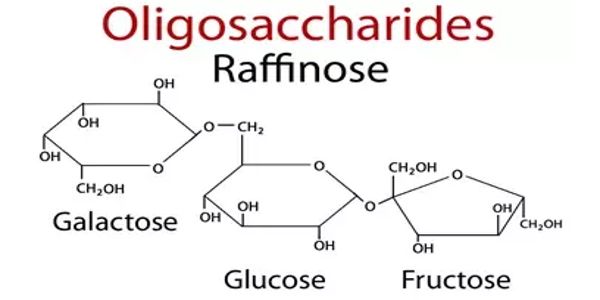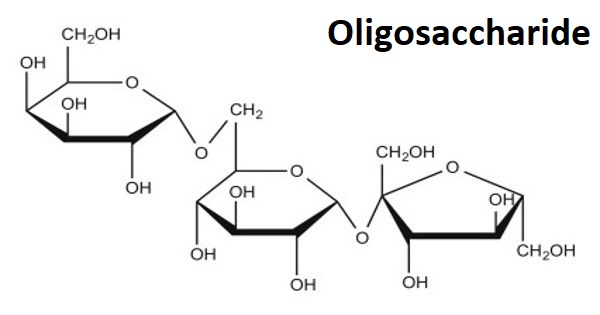Oligosaccharide is a carbohydrate whose molecules are composed of a relatively small number of monosaccharide units. It is a polymer of a few different simple sugars. Oligosaccharides are carbohydrates. A large number of oligosaccharides have been prepared by partially breaking down more complex carbohydrates. When they are hydrolyzed, oligosaccharides give 2 to 9 monosaccharides.
An oligosaccharide is a carbohydrate whose molecule, upon hydrolysis, yields two to ten Monosaccharid molecules. These are classified into subclasses based on the number of monosaccharide molecules that form when one molecule of the oligosaccharide is hydrolyzed.
Oligosaccharides are polymers containing a small number of monosaccharide residues connected by glycosidic linkages, while polysaccharides are the designation commonly used for larger polymers. Oligosaccharides are formed when 2 to 9 monosaccharide units combine with each other by the loss of water molecules, resulting in the formation of a glycosidic linkage. Most of the few naturally occurring oligosaccharides are found in plants.

Oligosaccharide is a saccharide that contains usually three to ten monosaccharide units. Conversely hydrolysis of an oligosaccharide in water in the presence of an acid or enzyme yields 2 to 9 monosaccharide units. These are any carbohydrate yielding few monosaccharides on hydrolysis, as two, three, or four. Oligosaccharides can be made of any sugar monomers, but most research has been carried out on fructooligosaccharides (e.g., oligofructose) and galactooligosaccharides (e.g., raffinose, human milk oligosaccharides).
Oligosaccharides which consist of two monosaccharides units are called as disaccharide. Oligosaccharides containing 3 monosaccharides are called trisaccharides. It is a carbohydrate consisting of a relatively small and specifiable number of monosaccharides joined together. Few oligosaccharides are hydrolyzed and absorbed in the small intestine (e.g., maltotriose), but nearly all enter the colon intact (nondigestible oligosaccharides). Lactose, maltose, and sucrose are oligosaccharides consisting of two simple sugars. Raffinose is an oligosaccharide consisting of three simple sugars.
The beneficial effects of oligosaccharides have attracted the interest of food scientists and food companies to isolate the oligosaccharides from dairy by-products. These have many functions in humans and the most commonly investigated is their effect on animal cell plasma membranes where they play an important role in cell – cell recognition.
















